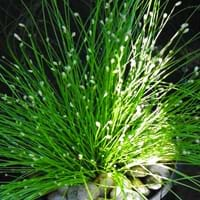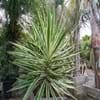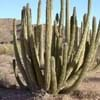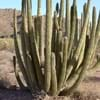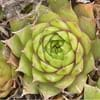Life Span
Perennial
Annual
Origin
Southwestern United States, Mexico
Southern Europe, United Kingdom, Northern Africa
Types
Yucca aloifolia 'Purpurea' , Yucca aloifolia
Not Available
Habitat
coastal environs, Coastal sand dunes, mild coastal areas
Grassland, Humid climates, Riverbanks, Wet forest
USDA Hardiness Zone
7-9
8-11
Sunset Zone
2a, 2b, 3a, 3b, 4, 5, 6, 7, 8, 9, 10, 11, 12, 13, 14, 15, 16, 17, 18, 19, 20, 21, 22, 23, 24
7, 8, 9, 10, 11, 12, 13, 14, 15, 16, 17, 18, 19, 20, 21, 22, 23, 24
Habit
Rosette/Stemless
Arching/Fountain-shaped
Flower Color
Pink, Ivory
White
Flower Color Modifier
Bicolor
Bicolor
Fruit Color
Brown
Non Fruiting Plant
Leaf Color in Spring
Green, Gray Green, Dark Green
Green
Leaf Color in Summer
Green, Gray Green, Dark Green
Green
Leaf Color in Fall
Green, Gray Green
Green
Leaf Color in Winter
Green, Gray Green, Dark Green
Green
Leaf Shape
long with sharp edges
Linear
Plant Season
Spring, Summer, Fall, Winter
Spring, Summer, Fall, Winter
Sunlight
Full Sun
Full Sun, Partial Sun, Partial shade
Growth Rate
Very Slow
Slow
Type of Soil
Loam, Sand
Loam
The pH of Soil
Acidic, Neutral, Alkaline
Neutral
Soil Drainage
Well drained
Poorly Drained
Bloom Time
Late Spring, Early Summer
Indeterminate
Tolerances
Drought, Salt
Drought
Where to Plant?
Ground
Container, Ground, Pot
How to Plant?
Cuttings, Divison
Seedlings, Stem Planting
Plant Maintenance
Medium
Medium
Watering Requirements
Keep the Soil well drained, Needs very little water
Keep the ground moist but not water-logged, Requires regular watering, Water when soil is dry
In Summer
Lots of watering
Lots of watering
In Spring
Moderate
Moderate
In Winter
Average Water
Average Water
Soil pH
Acidic, Neutral, Alkaline
Neutral
Soil Type
Loam, Sand
Loam
Soil Drainage Capacity
Well drained
Poorly Drained
Sun Exposure
Full Sun
Full Sun, Partial Sun, Partial shade
Pruning
Remove damaged leaves, Remove dead branches, Remove dead leaves
Remove damaged leaves, Remove dead branches, Remove dead leaves
Fertilizers
All-Purpose Liquid Fertilizer
All-Purpose Liquid Fertilizer
Pests and Diseases
Leaf spot, Scale
Red blotch
Plant Tolerance
Drought, Salt
Drought
Flower Petal Number
Single
Single
Foliage Texture
Bold
Fine
Foliage Sheen
Matte
Glossy
Attracts
Butterflies, Not Available
Insects
Allergy
Unknown
Asthma, Skin irritation
Aesthetic Uses
Borders, Cottage Garden, Wild gardens, Woodland margins
Beautification
Beauty Benefits
Not Available
Not Available
Environmental Uses
Air purification
Air purification
Medicinal Uses
No Medicinal Use
Digestion problems, Fever
Part of Plant Used
Not Available
Whole plant
Other Uses
Beneficial species for attracting pollinators
Showy Purposes, Used as Ornamental plant
Used As Indoor Plant
No
Yes
Used As Outdoor Plant
Yes
Yes
Garden Design
Rock Garden, Wall, Wildflower
Bog Garden, Container, Edging, Rock Garden / Wall
Botanical Name
YUCCA harrimaniae
ISOLEPIS cernua
Common Name
mound lily
Low Bulrush
Slender Clubrush
In Hindi
palm lily
फाइबर ऑप्टिक घास
In German
palm lily
Lichtwellenleiter-Gras
In French
palm lily
Fibre optique Herbe
In Spanish
palm lily
Hierba de fibra óptica
In Greek
palm lily
Οπτικών Ινών Grass
In Portuguese
palm lily
Fibra Óptica Relva
In Polish
palm lily
Światłowody Trawa
In Latin
palm lily
Fiber opticus Grass
Phylum
Magnoliophyta
Not Available
Class
Liliopsida
Not Available
Family
Agavaceae
Cyperaceae
Clade
Angiosperms, Monocots
Angiosperms, Commelinids, Monocots
Tribe
Not Available
Not Available
Subfamily
Agavoideae
Pooideae
Number of Species
Not Available
Importance of Palm lily and Fiber Optic Grass
Want to have the most appropriate plant for your garden? You might want to know the importance of Palm lily and Fiber Optic Grass. Basically, these two plants vary in many aspects. Compare Palm lily and Fiber Optic Grass as they differ in many characteristics such as their life, care, benefits, facts, etc. Every gardener must at least have the slightest clue about the plants he wants to plant in his garden. Compare their benefits, which differ in many ways like facts and uses. The medicinal use of Palm lily is No Medicinal Use whereas of Fiber Optic Grass is Digestion problems and Fever. Palm lily has beauty benefits as follows: Not Available while Fiber Optic Grass has beauty benefits as follows: Not Available.
Compare Facts of Palm lily vs Fiber Optic Grass
How to choose the best garden plant for your garden depending upon its facts? Here garden plant comparison will help you to solve this query. Compare the facts of Palm lily vs Fiber Optic Grass and know which one to choose. As garden plants have benefits and other uses, allergy is also a major drawback of plants for some people. Allergic reactions of Palm lily are Unknown whereas of Fiber Optic Grass have Asthma and Skin irritation respectively. Having a fruit bearing plant in your garden can be a plus point of your garden. Palm lily has showy fruits and Fiber Optic Grass has showy fruits. Also Palm lily is not flowering and Fiber Optic Grass is not flowering . You can compare Palm lily and Fiber Optic Grass facts and facts of other plants too.

